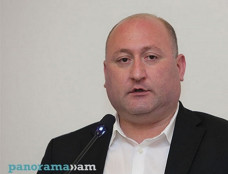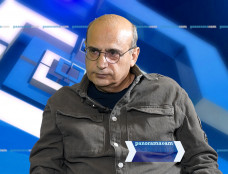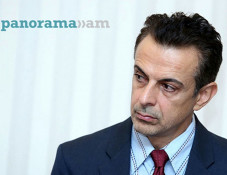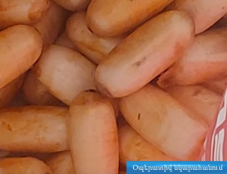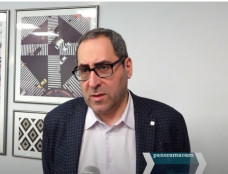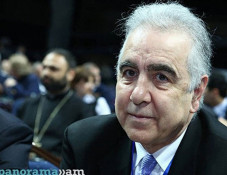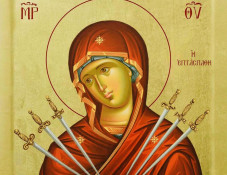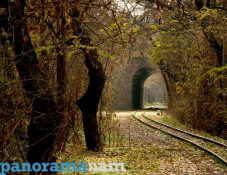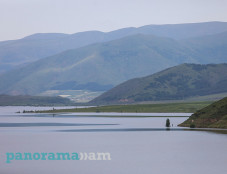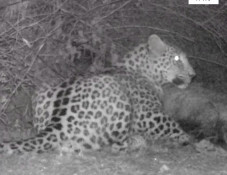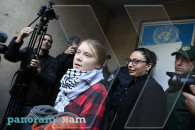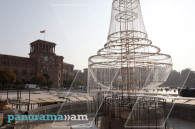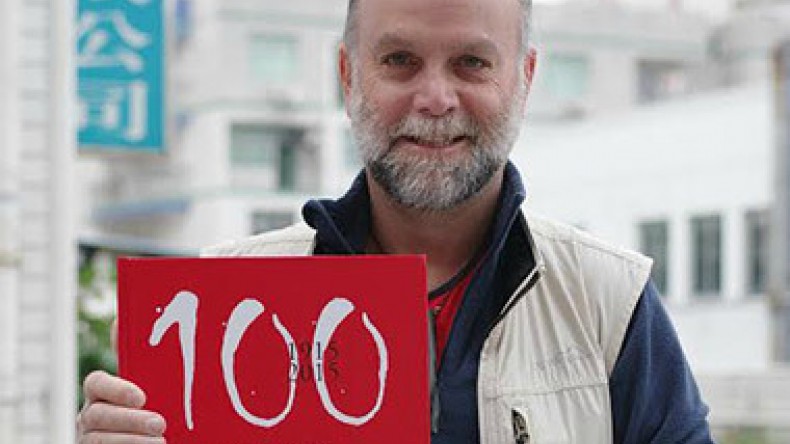
Hrair Hawk’s new book documents rich Armenian heritage in Turkey and worldwide
Panorama.am presents an interview with renowned Canadian-Armenian photographer Hrair Hawk Khatcherian on his recently published 516-page photography book 100: 1915-2015 dedicated to the centennial of the Armenian Genocide. The book presents the riches of the Armenian cultural and historical heritage through photographs taken in more than 40 countries within 17 years. It also demonstrates the ongoing destruction of Armenian churches in Western Armenia (presently occupied by Turkey).
Nvard Chalikyan: Your photography book titled 100: 1915-2015 presents extensive documented evidence of the Armenian presence and rich cultural heritage all over the world, including Western Armenia. What is the main message that your book delivers to Armenian as well as non-Armenian readers?
Hrair Hawk: For almost four thousand years Armenians have lived in and around present day Republic of Armenia, surviving invasions by armies travelling Eastbound or Westbound, and my message is simple, that of a nation who has and still is living against all odds.
N.C.: You note that your book begins by victorious pages and shows the wealth of Armenia instead of focusing on tragedy. Can you say more about this?
H.H.: My book starts with majestic biblical Mount Ararat where the arch of Noah rested; on the foothills of the mountain Armenians built the church of Sourp Hagop, which was destroyed in an earthquake – only the khatchkars have survived till today. This is followed by the coins of past Armenian kings starting by Tigranes II (95-55 BC) and by the Armenian, Greek and Persian gods of Mount Nemrut. It then portrays Armenians as the first nation who adopted Christianity in the year 301 and built thousands of churches in every corner of ancient Armenia. The book also includes photographs of magnificent manuscripts, costumes and artefacts following the creation of the Armenian Alphabet in the 5th century.
N.C.: How many photographs of Western Armenian sites are included in your book? What century does the photograph of the oldest Armenian coins and churches in your book date back to?
H.H.: The book includes well over 1000 photographs. The coins date back 2000 years and the churches to the 4th and 5th century in the region of Van.
N.C.: While working on this book you visited Western Armenia 30 times throughout 17 years! What can you say about the changes, particularly about level of destruction and plunder of the Armenian monuments that you have observed throughout these years?
H.H.: During the first trips we were always followed by secret police and rocks were hurled at our vehicles… all this has changed and nowadays we are met with friendlier people, however the destruction has been ongoing. Especially in the seventies major Armenian pilgrimage sites were destroyed like Sourp Garabed and Sourp Arakelots of Moosh and Khdzgonk, also the monastery of Nareg near Van is completely destroyed. Gold diggers still dig inside and around the churches looking for gold, thus weakening the structure, and nature finishes off what humans have started. Thousands of holy sites were desecrated and houses were demolished, entire villages were wiped out. For example at Kharpert (Harput) an old photograph shows packed Armenian houses and in the same location today we notice no dwellings but trees instead. On the other hand in the recent years many Armenian churches were renovated by the Turkish government under pressure from the European Union and the United States.
N.C.: What is their current state? Are many of them being destroyed at this moment in present-day Turkey?
H.H.: Many Armenian graveyards are destroyed, not only Christian but also Seljuk ones – gold diggers believe they are wealth to be unearthed and no sacred site is spared. At present time the destruction goes on but has slowed down.
N.C.: Did you witness such destruction of Armenian heritage in other countries you have visited?
H.H.: In Syria I have photographed the Armenian churches and due to the civil war which is raging till now many of the photographs I have taken have historical value, as ISIS has demolished many of them; same atrocities are happening in Iraq and Egypt. In Iran some Armenian churches have been damaged by time as the Armenian population relocates in other countries. In Georgia the locals are defacing the Armenian churches and replacing them with Georgian inscriptions. In the USA many small communities unable to support the church are forced to sell them. In Armenia many historical monasteries are abandoned and require immediate attention and care.
N.C.: What steps, if any, do you think can be taken to prevent further destruction of Armenian cultural heritage in Western Armenia?
H.H.: Some Armenian churches are used as storage by the locals in Turkey and in a way this prevents the building from collapsing altogether; restoration is not always the solution if the church will not be used. The Armenian Diaspora is building new churches wherever the community is thriving... In rare occasions like Sourp Giragos of Diyarbekir the Diaspora participated in the cost of rebuilding and it is taken care of by local Armenians. Time and nature are destroying the abandoned churches.
N.C.: How do you think your book can contribute to the actual campaign of Armenian Genocide reparations?
H.H.: While working on my book I travelled to Venice, Italy and Vienna to the Mekhitarist brotherhood and photographed Armenian manuscripts and artefacts as well as costumes kept in their museums that had been rescued from the Genocide. I have photographed manuscripts at the Armenian Catholicosate of Cilicia in Lebanon, the Armenian Patriarchate of Jerusalem, the Armenian Patriarchate of Istanbul, at Matenadaran in Armenia, at the history museum of Armenia, as well as at the Armenian Library and Museum of America (ALMA) in Boston – all these are solid proof of the richness of the Armenian nation and thanks to these rescued relics we have proof about the existence of Armenians throughout history and throughout what is today Turkish territory.
Each photographed manuscript, each photographed artefact has the town and dates marked, thus the proof of Armenian existence in Turkey then, from 2000 years ago up till today.
N.C.: What response has your book received so far?
H.H.: This book is enlightening to everyone, and the positive energy can be seen in every page.
N.C.: Two of other photographic books you have published document the Armenian cultural heritage in Artsakh (Artsakh: A photographic journey (1997), Karabagh: 100 Photos (2002)). Did you cover the territory of the whole NKR, including the liberated territories? What can you single out in terms of the Armenian historical presence there?
H.H.: Yes I have travelled inside Artsakh and the liberated territories and photographed churches and khatchkars. Three monasteries there stand out as jewels of Armenian architecture – Gandzasar, Dadivank and Dzidzernavank – all are exquisite, few monasteries and churches have survived invasions, same for khatchkars.
N.C.: Where can those who want to purchase your book “100” obtain it?
H.H.: In about two months my books will be ready for shipping and they can contact me in person by email [email protected].
Hrair Hawk Khatcherian was born in Lebanon; his grandfather was a Genocide survivor born in Zeytoun. Hrair came to Armenia first time in 1992 during the Artsakh (Karabakh) war and inspired by the courage of his fellow Armenians fighting for independence, he shortly took to photographing the rich Armenian heritage in Karabagh, in Republic of Armenia as well as in Western Armenia and later in different parts of the world. Hrair continues this mission till today and has perhaps taken more photos of Armenian churches than any other photographer.
Hrair Hawk has published 12 photography books, among them Artsakh: A Photographic Journey (1997), 40 Nudes (2001), Karabagh: 100 Photos for the Independence (2002), Yergir (2005), Armenian Ornamental Art with Armen Kyurkchyan (2010), Armenian Ornamental Script (2012) and One Church, One Nation (2013). For almost three decades now Hawk has been presenting exhibitions, conferences, photographic lectures all around the globe. His photographs have appeared in numerous magazines, newspapers, books and publications.
By Nvard Chalikyan
Newsfeed
Videos





